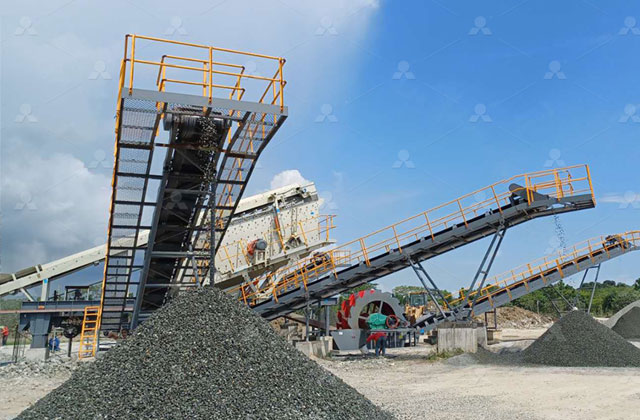Crushed stone aggregates are a foundational component in modern construction, used extensively in roads, buildings, concrete production, and landscaping. As demand for high-quality aggregate increases globally, the need for efficient, sustainable, and technologically advanced crushing processes has never been more crucial. This article explores the key solutions used in the crushed stone aggregate production process, highlighting innovations, equipment, and strategies that optimize efficiency and output quality.

Overview of the Crushed Stone Aggregate Process
The production of crushed stone aggregates involves several key stages:
-
Primary Crushing – Large rocks are broken down using jaw or gyratory crushers.
-
Secondary and Tertiary Crushing – Cone crushers or impact crushers further reduce the material size.
-
Screening – Vibrating screens separate the material into various size fractions.
-
Washing and Classifying – Removes unwanted fines and impurities for higher quality output.
-
Stockpiling and Storage – Finished aggregates are stored based on size and quality.
Each of these stages requires specific equipment and process management to ensure product consistency, reduce waste, and maximize throughput.
Advanced Crushing Equipment Solutions
Modern equipment is engineered for high performance, durability, and energy efficiency. Key equipment solutions include:
-
Jaw Crushers: Ideal for primary crushing; they offer high reduction ratios and are suited for hard rock.
-
Cone Crushers: Preferred for secondary and tertiary crushing, providing well-shaped and consistent aggregates.
-
Impact Crushers: Used for softer stone or shaping applications, producing cubic aggregates for concrete and asphalt.
-
Mobile Crushers: Offer flexibility for on-site processing, especially in remote or temporary construction projects.
Screening and Separation Technologies
Efficient screening systems are crucial for sorting crushed stone into usable sizes:
-
Inclined Vibrating Screens: Effective for dry materials and high-capacity production lines.
-
Horizontal Screens: Better for fine material separation and wet screening.
-
Trommel Screens: Used in specific cases for sticky or wet materials.
Modern systems often integrate automated feedback loops that adjust screen angles and vibration frequencies for maximum efficiency.
Dust Control and Environmental Solutions
Crushed stone production can generate significant dust and noise pollution. Environmentally friendly solutions include:
-
Water Sprays and Misting Systems: Control dust at crushing and screening points.
-
Dust Collection Units: Such as baghouses and cyclones for enclosed systems.
-
Noise Barriers and Enclosures: To minimize sound pollution near residential areas.
-
Recycling Water Systems: For wash plants, reducing freshwater consumption.
The crushed stone aggregate process is complex but can be significantly optimized through the integration of modern equipment, automated systems, environmental controls, and sustainable practices. Whether for large-scale infrastructure or localized building projects, choosing the right process solutions can improve productivity, reduce operational costs, and meet strict environmental standards. As the industry moves forward, investing in smart, adaptable, and eco-friendly technologies will be key to long-term success in aggregate production.

